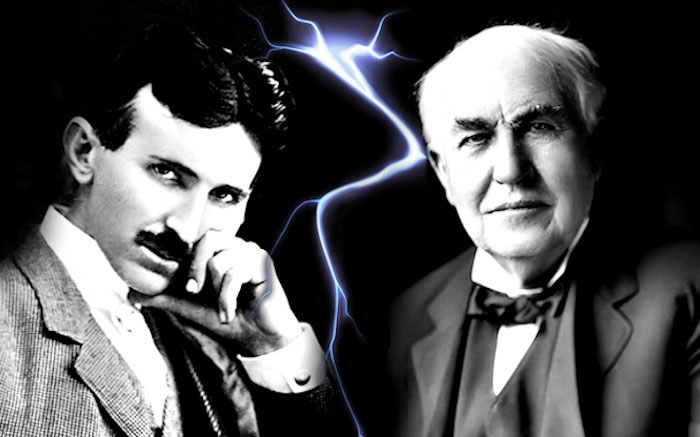Edison's controversial experiment shocked the world because of human cruelty
To protect his views, Edison performed a nine-elephant roasting experiment.
Thomas Edison (1847 - 1931) was a great American inventor. He left the world with thousands of incredibly useful inventions and inventions that we still have today.
One of his most important inventions was a filament light bulb, which in turn gave an invention of greater stature: the world's first direct current (DC) distribution plant . gender in 1880.
But it was also because of this power plant that 23 years later, he made a controversial experiment for the whole world: baking nine 36-year-old elephants with alternating current (Alternating Current - AC) 6600V.
Why do you have to do that?
The truth is that Edison's unidirectional (DC) generation system at that time was always in a "monopoly" state , until Nikola Tesla appeared with Westinghouse Electric Company in 1888.
Tesla is a genius inventor, even many people value him higher than Edison. He invented the principle of operation of alternating current (AC) on electric motors, and then acquired the patent by Westinghouse. And since then, an electric war (The Current War) has erupted between Edison (DC) and Westinghouse (AC).

The electric battle between Tesla and Edison.
Basically, Westinghouse's alternating current can push the voltage very high and then down with a transformer. As a result, alternating current transmission requires a wire with a smaller cross section than Edison's direct current transmission power line, thereby greatly reducing costs.
By the time Tesla invented the alternating electric motor, Edison and his colleagues were forced to "attack" the AC in the field of electrical safety. Edison said that AC is much more dangerous than DC . This is fundamentally correct, because according to later experiments, the damage caused by AC currents on living cells is two to four times greater than that of DC at the same voltage.
And to prove this, Edison did a series of experiments that killed animals with alternating current, like shocking a horse in the picture below.

Experiment to kill a horse with alternating current.
The elephant-killing experiment is controversial for the whole world
However, despite receiving world consensus about the danger of alternating current, Edison's experiments are still controversial because of the humanity in it. In addition, Edison could not rotate the situation when the AC line brought too many advantages.
By 1892, when the largest hydroelectric project in the world at that time in Niagara Falls (USA) decided to use an alternating power generation system to transmit electricity to a location 32km away, it was as if Edison had succumbed. completely.
A proof of human heartlessness
Edison's experiment was just one of the proofs of human ruthlessness in the name of "science".
For example, in 1817, German scientist Karl August Weinhold sought to create . cat zombies, by killing a cat and injecting zinc and silver. Or like the famous study in 1990, when scientists cut almost the whole brain of a cat to find the area responsible for mobility.
Although it is undeniable that we are required to perform experiments on animals before applying them to humans, many of them are just to prove and protect the views of some individuals. This is exactly what animal protection organizations are trying to condemn today.
- The picture revealed the ruthlessness of rare animal poaching
- The experiment proves that
- Moral controversy when Japan allowed the creation of human embryos and mice
- The most horrifying psychological experiment in history
- See NASA's terrifying landing aircraft experiment
- The most expensive experiment in the world is broken
- Scientist tells about the experiment of hybridization of chimpanzees
- Initial success in connecting human brains together
- Occupation of experimental mice
- Experiments comparing breast milk and formula milk are controversial
- 83 people died in the US syphilis experiment
- The most 'inhumane' psychological experiment in history and the controversial facts behind
 'Fine laughs' - Scary and painful torture in ancient times
'Fine laughs' - Scary and painful torture in ancient times The sequence of numbers 142857 of the Egyptian pyramids is known as the strangest number in the world - Why?
The sequence of numbers 142857 of the Egyptian pyramids is known as the strangest number in the world - Why? History of the iron
History of the iron What is alum?
What is alum?